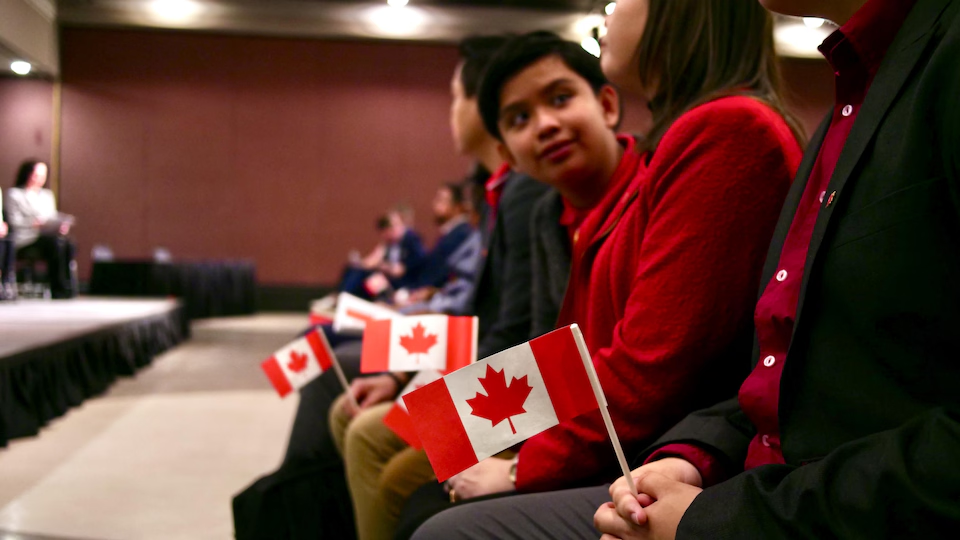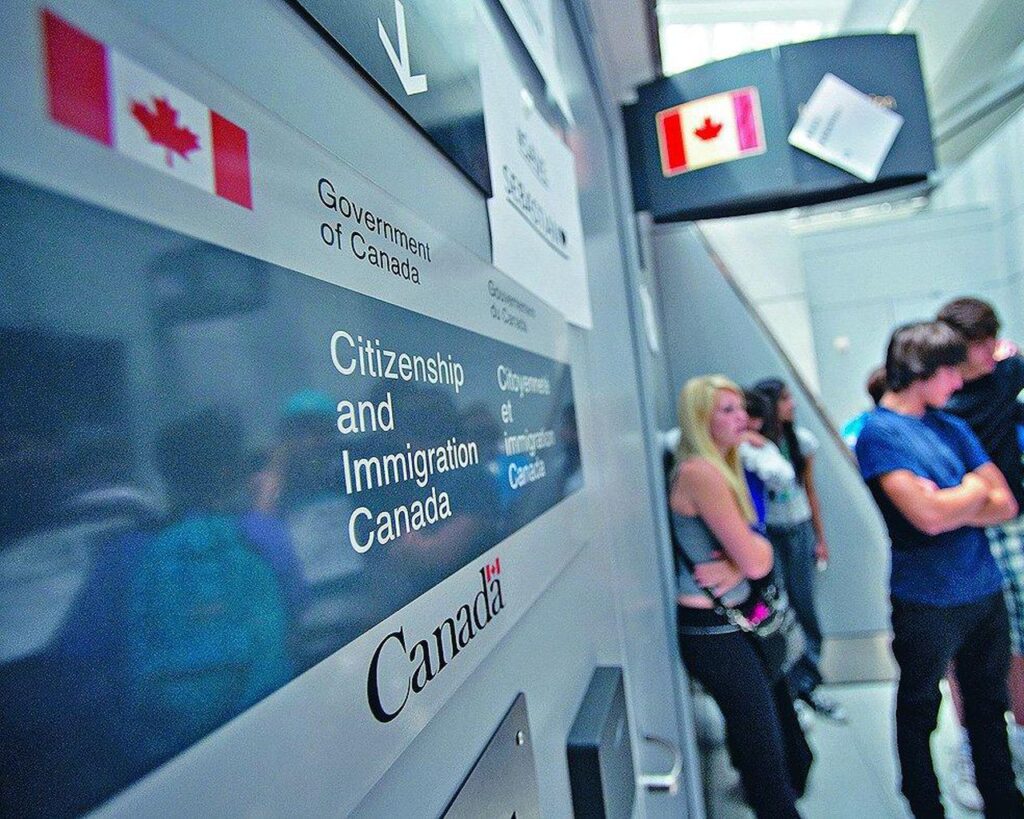Canada is entering a new chapter with its fresh immigration plan for 2025–2027. The government’s blueprint, led by Prime Minister Mark Carney, sets out to steady the pace of newcomers while making sure growth matches Canada’s housing, healthcare, and job capacity.
Permanent resident spots will be capped below previous levels, while temporary resident numbers like international students and workers are set to decline gradually. Economic streams—especially skilled workers in fields like healthcare and trades—are still a big focus, making up most of the new arrivals.
These updated policies come as Canadians call for balance. By trimming targets and tightening criteria, the government hopes to welcome newcomers who can succeed, support economic growth, and ease public concerns about strained services. For current residents and those hoping to call Canada home, this marks a move toward a more measured, sustainable approach.
Overview of the 2025–2027 Canadian Immigration Levels Plan
Canada is shaking up its immigration approach for 2025–2027. The new plan aims to keep population growth in check, respond to pressure on services like housing and healthcare, and focus on attracting the kinds of newcomers who can make the biggest difference for the country’s future. Here’s what to know about permanent and temporary resident numbers, along with the reasons driving this shift.
Permanent Resident Admission Targets and Composition
The government is dialling back the number of new permanent residents admitted each year. Unlike previous years of record intake, the annual targets will drop to 395,000 in 2025, 380,000 in 2026, and 365,000 by 2027. These reductions mark a major change in direction after years of steady increases in immigration levels. For official details, the government’s release provides a breakdown of the 2025–2027 Immigration Levels Plan.
Within these totals, the makeup of new arrivals is changing. There’s a stronger focus on:
- Skilled economic immigrants, such as workers in healthcare, trades, technology, and science.
- A jump in targets for French-speaking immigrants outside Quebec to support bilingualism and labour shortages across the country.
- Fewer spots reserved for family reunification and humanitarian streams, reflecting the tighter overall limits and new priorities.
The demographic shift aims to ensure that new Canadians are well-matched to labour market needs and can settle into jobs faster, boosting productivity and helping sustain programs like healthcare. By increasing the proportion of immigrants chosen for their economic potential, the government is betting on a more resilient future for both the economy and communities.
Temporary Residents and Capping Measures
Along with smaller permanent resident intake, Canada is introducing tight controls on the number of temporary residents—including international students, temporary foreign workers, and other short-term visa holders.
For the first time, the government will cap their share of the population at below 5% nationwide by 2027. This is a direct response to calls for policies that slow population growth and take pressure off housing and city services. Key measures include:
- Sharper restrictions on new study permits, especially for private colleges.
- Stricter rules for employer-sponsored work permits.
- Encouraging transitions from temporary to permanent status—but only for those in priority fields or regions.
Students, workers, and visitors who are already in Canada may see new pathways to stay if they can boost the economy or fill essential roles. For incoming applicants, the pathway is narrowing. These moves underscore the balance Canada is seeking between opportunity and stability. For more details, review the official supplementary information.
Drivers and Rationale for Reform
Why is Canada changing course? The answer lies in the fast-growing concerns about housing shortages, healthcare strain, and lagging infrastructure upgrades.
- Housing market pressure: More newcomers have pushed up demand for rentals and homes, making it tough for both Canadians and recent arrivals to find affordable places to live.
- Healthcare bottlenecks: Hospitals and clinics are struggling to keep up with a rising population, leading to long waits and staffing shortages.
- Urban infrastructure: Rapid growth in many cities has stretched resources like public transit, schools, and utilities.
At the same time, public debate has shifted. More Canadians want to see immigration support economic growth, but not at the expense of stability or quality of life. The government has listened by setting clear caps and slowing the rate of intake, citing affordability and long-term planning needs. The new approach tries to balance welcoming newcomers with making sure communities can adapt and thrive.
For a clearer picture of recent debates and planned changes, KPMG’s summary on the Canada Immigration Levels Plan 2025–2027 offers up-to-date insights.
Canada’s rethink on immigration is designed to reduce pressure, boost resilience, and help new residents build better lives. The next sections will break down what these changes mean for would-be immigrants, employers, and Canadian families.
Key Policy Shifts and Strategic Initiatives
Canada is rewriting the rules on who can call the country home. Under the 2025–2027 immigration plan, government leaders are cracking down on fraud, modernising the system, and picking immigrants who best match Canada’s workforce needs. This new direction brings big shifts to long-standing programs like Express Entry, ramps up pathways from temporary to permanent status, and leans heavily on technology for oversight. Below is a closer look at the major policy updates shaping Canada’s approach.
Express Entry and Points System Reforms
The government has introduced targeted changes to the Express Entry system. Most notable is the removal of points awarded for job offers. This move closes loopholes that fraudsters exploited for years. Some employers and agents used fake or misrepresented job offers to boost candidates’ scores. With this update, only those already showing real, in-demand skills are likely to succeed.
Canada now focuses more on applicants already in the country. By giving preference to skilled workers and international graduates with Canadian experience, the system shifts towards proven contributors. This not only thwarts fraud but also helps address persistent shortages in sectors like health care, education, and construction.
Key implications for skilled workers:
- Applicants need to show solid Canadian credentials, not just overseas work histories.
- The removal of job offer points means local experience and language proficiency matter more than ever.
- Programmers, engineers, nurses, and tradespeople will still find openings, especially if they’ve trained or worked in Canada.
For detailed information on the policy changes, check the official Supplementary Information for the 2025–2027 Immigration Levels Plan. Additional analysis of new categories and eligibility changes is available in coverage of major Express Entry reforms for 2025.
Temporary-to-Permanent Pathways and Pilot Programs
Canada is strengthening paths from temporary status to permanent residency, but with stricter filters. New pilots target caregivers, rural residents, and those filling gaps in key communities. Instead of relying on a one-size-fits-all model, the government supports region-specific programs that match newcomers to where they’re most needed.
Some highlights include:
- Updated caregiver streams make it easier for those already working in Canada to transition if they meet set requirements.
- Rural and northern immigration pilots match immigrants with jobs outside crowded cities, helping smaller communities thrive.
- Provinces get more say in picking newcomers through their nominee programs, pushing for solutions that fit local needs.
People working in health care and skilled trades see the biggest benefits, especially in underserved regions. However, these transitions are no longer automatic—strong job performance, clear community ties, and local support are essential to qualify.
For more, the government’s summary on planned regional programs and nominee initiatives breaks down the new pathways.
Technology, Monitoring, and System Integrity
Modern challenges require smarter tools. Canada now leans on artificial intelligence and digital platforms to process applications, track patterns, and spot potential abuses in real time. AI springs into action where old checks missed problems, especially in flagging fraudulent documents and duplicate entries.
Online application systems also create a faster, more transparent process for both applicants and officials. Applicants can see where they stand, upload documents securely, and get updates without long waits or in-person visits.
Major improvements include:
- AI-based risk assessments that flag suspicious files for manual review.
- Automated document checks and identity verification, which cut processing times.
- Live tracking of application stats to help policymakers adjust quotas and spot trends quickly.
With these upgrades, Canada brings new efficiency to its immigration program while protecting against misuse. For an update on how technology supports policy integrity, review insights on how AI is reshaping Canadian immigration.
These changes set a clear tone: Canada wants honest, skilled, forward-thinking newcomers who can contribute quickly, and technology is helping make that happen.
Impacts, Opportunities, and Challenges
Canada’s updated immigration direction brings big changes for employers, communities, and families across the country. It’s not just about numbers—these policies shape how whole sectors hire, how smaller towns grow, and how families and refugees build a new life. With lower targets and new rules, everyone’s adapting fast to economic shifts and community needs.
Labour Market and Employer Strategies
Rising labour shortages are already testing business owners nationwide. The new plan, by slowing the number of newcomers, pushes employers to do things differently. Competition for workers is heating up in healthcare, trades, food services, and technology, where roles are tough to fill with the current Canadian workforce.
Employers now face:
- Higher wage pressure. Workers can demand better pay, benefits, and working conditions, since there are fewer candidates.
- Urgency to train and retain staff. Upskilling is no longer optional—companies need to invest in programs that advance employees’ abilities so fewer roles go unfilled.
- Creative recruitment strategies. Employers look beyond big cities, tap underrepresented groups, and match workers to jobs that need filling the most.
Some firms are also building stronger ties with schools, offering apprenticeships, or working with immigrant settlement groups to address skill gaps quickly. The government highlights how a steady workforce keeps Canada competitive and supports public services, as seen in Canada’s immigration track record.
But it’s not just about finding any worker—the skills gap matters more than ever. A recent RBC report argues that the focus should be on hiring the right talent, not just increasing numbers. Employers must now align hiring with the skills Canada needs for the future, making every new hire count.
Regional and Community Implications
The shift to regionally targeted immigration changes the game for smaller cities, remote towns, and rural areas. Policies now aim to direct newcomers to spots where they’re most needed, instead of loading up already crowded urban centres.
- Rural programs, like the Rural and Northern Immigration Pilot, are helping towns find workers for farms, factories, hospitals, and schools. For example, more than 8,500 newcomers have already settled in communities that used this approach, bridging gaps and fueling local economies. Details of these results are shared in the government’s report on rural and francophone community immigration pilots.
- Francophone immigration is getting strong backing, encouraging French-speaking newcomers to settle outside Quebec. This strengthens bilingualism and brings diversity to smaller communities across the country.
- Partnerships among towns, local employers, and regional governments help support arrivals with housing, language training, and job placement. These tailored supports help people put down roots faster.
By focusing on these local needs, Canada creates opportunities for towns struggling with population decline. The Rural Community Immigration Pilot shows that region-led programs can drive real results—revitalising communities and ensuring the benefits of immigration are spread across the country.
Family Reunification and Humanitarian Commitments
Even as Canada narrows its overall intake, it keeps strong commitments to family reunification and humanitarian protections. Many families separated by global events, or forced to flee crisis zones, find hope in these programs.
Key details on these streams include:
- Family reunification remains a priority for spouses, children, and parents, allowing families separated by borders to rebuild their lives together. More information on eligibility and process is on the UNHCR’s overview of family reunification.
- Humanitarian and compassionate programs are safeguarding vulnerable newcomers, including refugees facing persecution. Official targets set aside over 21,000 admissions for these cases between 2025 and 2027, as outlined in the government’s supplementary information.
- The response to refugee crises remains steady. Canada is committed to resettling both traditional refugees and people at heightened risk, such as human rights defenders, through programs supported by the Government-Assisted Refugees Program.
By keeping these pathways open, the policies balance national needs with compassion, supporting families and individuals facing tough circumstances, even as overall targets fall. Families and vulnerable groups can still access the help they need as the country’s approach adapts to new realities.
Canada’s new immigration policies set out a more measured pace for growth, aiming to give both communities and newcomers a fair chance to adapt. By putting limits on newcomers and shifting the focus to skilled talent already in the country, the government wants to ease pressure on housing, services, and the job market.
This approach is expected to help local communities keep support strong for immigration while protecting the quality of life for everyone. Over time, these changes could build a stronger social fabric and boost economic stability. As Canada adjusts to its new rules, its reputation for thoughtful, balanced policy could stand out on the world stage.












